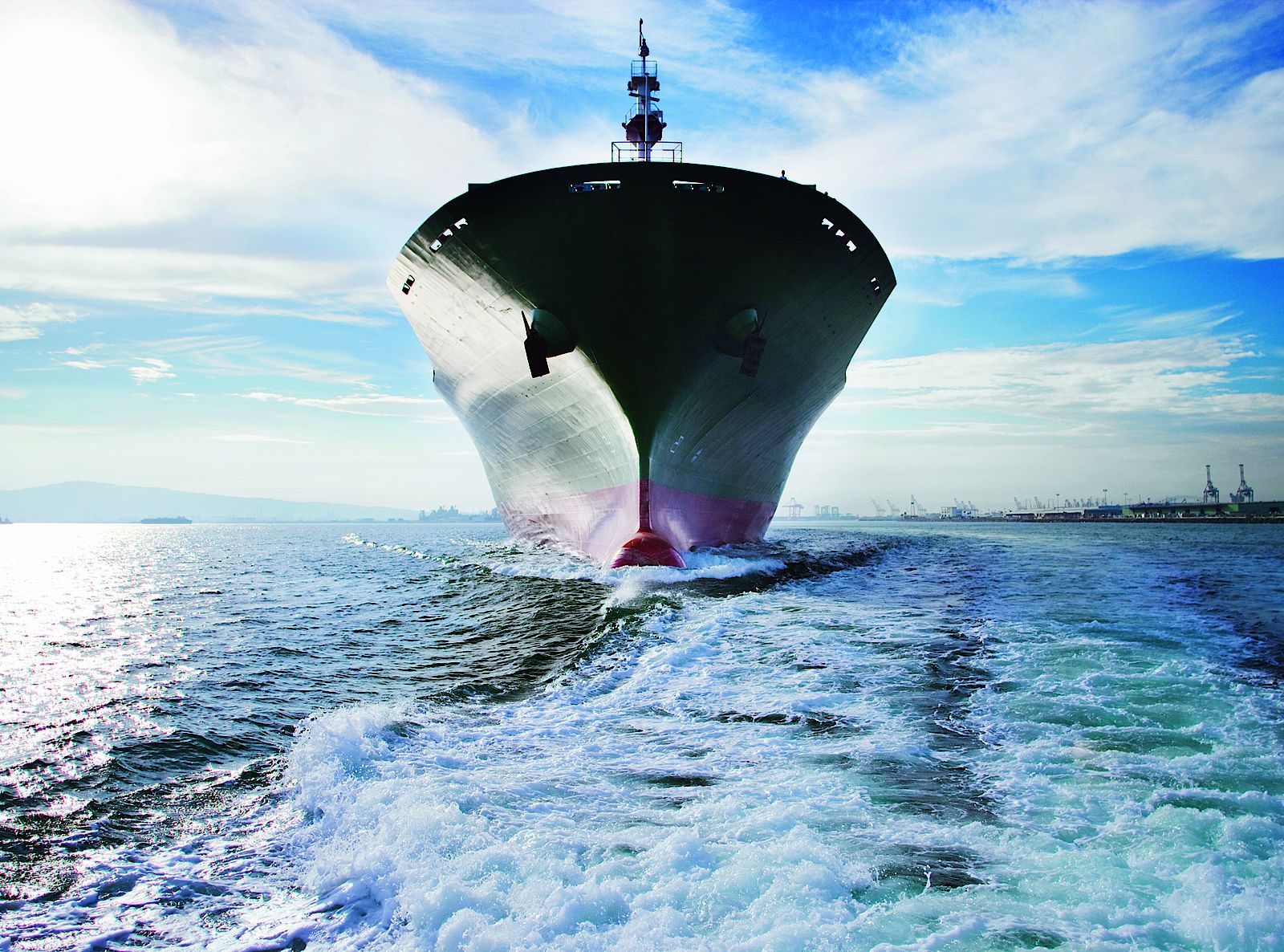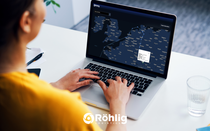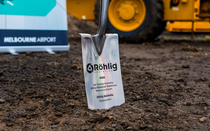Dear Valued Customer,
Welcome to the Röhlig Australia Market Update - February 2023. We will continue to be in contact with you, letting you know what is happening in the world of freight forwarding and logistics. If you have any questions and would like to address them, please send them to rohlig.australia@rohlig.com. We appreciate your suggestions and feedback.
Please click the drop-down sections below to read the update for AIR, SEA and CUSTOMS.
Flight numbers in February are stagnant, staying around the 80-90 international flights on our benchmark SYD airport arrivals.
The rate drops mentioned in our last newsletter are materialising, with European costs, in particular, beginning to move in the right direction, as a soft start to the year puts pressure on airline cargo managers to fill inbound flights.
This good news means cargo is travelling into Australia and New Zealand relatively delay-free, although there are challenges, with Union strikes in Frankfurt threatening to derail recent smooth operations.
German airport strikes have “massive consequences” for cargo operations
We have been relatively unscathed so far; however, we will keep close to any ongoing developments.
Year to date, we are seeing lower volumes, with more flights than any time since pre-covid. March is traditionally one of the top 3 months of the year for volume, and this year will give us a good indicator for the year ahead.
The next generation of Qantas aircraft
In local airline news, Qantas have shared details of their fleet modernisation, which you'll welcome if you’ve flown on any of their narrow body craft recently.
Read here: The next generation of Qantas aircraft
The 787-9 Dreamliner is excellent aircraft for freight, light and efficient airframe without the abundance of passengers like an A380 means good space for belly cargo, so the more of these we see, the better for the freight industry.
The ‘Project Sunrise’ A350-1000 not so much, more just to the sheer distance scheduled for them, meaning they will be landing on fumes…If you consider to do 23 hours on a plane, check out the new business and first cabins - Qantas A350 First and Business Cabin reveal
Oil and Jet fuel prices
Last month's oil was in our now familiar 70 to 80 USD barrel range for around four months straight with no technical reason to leave it, and here we still are. The barrel price is a little shaky at present, trading at 73 USD at the time of writing.
We may see some further downward pressure if March falls flat, with the US federal reserve interest rate decision on March 21st being a significant factor.
The incredible volatility on jet fuel remains in play, we are about to get some ease in costs in the next week or so for now as it rockets back down again off the back of demand and the oil move down.
Australia
Rates out of Australia into NZ continue to be stable, never seeing the extreme peaks of covid and correspondingly not seeing any noticeable drops. Passenger load management is being kept very tight with a mix of wide and narrow body flights often shifting month to month on the back of advance passenger bookings.
We are still waiting for Q2 to see if we get some further airline competition to NZ. Exports elsewhere continue on their rate stability for now; however, it looks like we will see an ease in costs to Asia and America.
New Zealand
Our Trans-Tas is stable and space is good inbound and outbound. Europe and the Americas continue to be a thorn in the air imports side at the moment while we patiently wait for the right mix of good aircraft and timing ( away with you A380 )
Our last newsletter hinted at a return to some big freighter aircraft arriving, and Emirates are landing their 777F in Auckland on Monday mornings now, with departures out of Dubai and Europe. That suits almost no one; however, we remain optimistic as we can see that airlines are adding planes to New Zealand, and this is a good start.
Asia
Chinese New Year has come and gone, but the real developing story will be the opening up of China further on covid restrictions and the return of multiple China-based airlines. Hopefully, this will bring low and stable rates to the market, watch this space.
USA
While we wait patiently for further interest rate developments, which spill over to the entire world, the USA continues to be flat on cargo.
The wheels of change happen slower on air freight ex USA, as US-AU is so reliant on freighters like Qantas, UPS and Fedex with their fixed freighter costs. We will see results as we see slowly increasing passenger aircraft come online and provide competition.
New freighter options ex JFK coming up mean we can now pick up those late week orders and still fly over the weekend, contact us for more information.
Europe
We have seen some price relief from Europe, and we do expect more to come. The freighter/passenger ratio here tilts more heavily on the passenger side, and that means rates swing quicker than the America’s when we see passenger bellies that aren’t full.
The Union strike chaos we talked about earlier is still a looming threat, however, with current volumes, we can manage single-day strikes with minimal impact. Hopefully, they don’t strike on a Saturday, as that may not be so easy to manage.
For more information about our Air Freight services, please click Rohlig Air Freight.
Oceania
Cyclone forced rare multiple closure of NZ ports
“Coming so soon after the earlier storm in the upper North Island at the end of January, Cyclone Gabrielle proved a severe test of New Zealand’s emergency management system as the greatest storm this century. A National State of Emergency was declared on Tuesday as Cyclone Gabrielle moved across the country and impacted more regions with access to some communities totally cut off.
KiwiRail’s rail network north of Marton was closed until further inspections are completed. With Cyclone Gabrielle moving further south, the Main North Line between Christchurch and Picton was closed. Whilst this time Auckland City was sideswiped with high winds the catastrophic flooding from the cyclone has been felt most in Northland, Coromandel, Bay of Plenty, Gisborne, and Hawke’s Bay, leaving a huge toll on farms, orchards and vineyards.” (The New Zealand Shipping Gazette, Page 1)
Armacup/WWL – Port congestion in Australia
Port congestion in Australian ports has now reached critical levels which does not allow for reliable service levels to be maintained. Waiting time in each Australian ports can now be anywhere between 7 and 24 days. Schedules for China to Australia services have been impacted.
Currently, there is significant terminal congestion in Australian east coast ports, driven by increased findings of seed contamination on imported cargoes. This biosecurity issue is not related to stink bugs/BMSB, for which there is a robust management process at load ports and instead relates primarily to seed contamination discovered after vehicles are discharged from the vessel. The DAFF are dedicating more resources into mitigating biosecurity risks. More inspectors have been hired, and as a result we expect to continue to see more findings and therefore, worsening delays.
The RoRo terminals in Australia have traditionally had capacity to treat import cargoes with biosecurity related issues with efficiency, and continue to offer biosecurity-related services, however the current percentage of import cargoes requiring those services has surpassed both the capacity to treat and to provide storage without negatively impacting regular terminal operations.
In addition to the visible port congestion in Australia, we also expect to see a flow on effect on inbound Oceania trades, due to late delivery of vessels back to load regions. To improve the situation, Armacup/WWL have identified several short-term, and long-term initiatives that include but are not limited to engagement with local authorities to reduce delays, expanding the port and labour network by utilising non-base ports, alternative ports of call and working with customers to improve the inspection and cleaning processes in the regions of origin.
FOCUS Container Line goes into Liquidation
FOCUS Container Line has gone into liquidation. The Australian Securities and Investments Commission Tuesday (14 February) gave notice that the company would be wound up and appointed two liquidators from BRI Ferrier. A spokesperson for Focus Container Line told DCN the company had “no comment at this stage”. Managing director of United Rentals Australia (the parent company of Royal Wolf) Neil Littlewood told DCN the company had rented 3000 containers to Focus Container Line – a mix of 40-foot and 20-foot high cubes. The containers were on long-term lease to the line. Industry sources have raised the specter of the debacle following the collapse of Hanjin Shipping. They told DCN empty container park operators are concerned about the future of the Focus containers sitting in their yards. The industry sources said there are hundreds of containers in one Brisbane yard and around 300 empty containers in a Melbourne yard, with others being repositioned around Australia.
In advertising copy, Focus Container Line said it was a “new Australian owned and operated container shipping service providing simple and streamlined shipping to all freight forwarders throughout Australia and New Zealand”. In November last year, Focus Container Line announced a new service between Ningbo, Auckland and Australia. The service deployed two ships: the MPP vessel BBC Denmark and the 1700-TEU San Giorgio. AIS data sows BBC Denmark anchored off Auckland and San Giorgio heading north in the Coral Sea towards Hong Kong. DCN understands Focus Container Line was founded in March 2022 and is based in Brisbane.
“We’re still in a process of discovery with the liquidator for all containers – we’ll be taking action in the short term to recover them – most of the containers are empty,” he said. Mr Littlewood said the containers are all located in New Zealand and the east coast of Australia. “We have no visibility on any chance of a pay-out of the full long-term lease and this will be a financial hit to Royal Wolf – hopefully it will be a short impact,” he said. “We will have to bring those containers back to
our depots and rebrand them and find an efficient asset strategy for those containers … We’ve got a lot of containers to get out and rent.” Focus Container Line goes into liquidation - Daily Cargo News (thedcn.com.au)
Global News
Carriers are now paying the price for cancelling too few sailings
“Container liners demonstrated in 2020 that they are able to reduce capacity when demand declines. They chose not to do so in 2022’s second half, and for this the price is now being paid, writes Sea-Intelligence. The upcoming price war in the container sector seems to be self-in”. Read more: ShippingWatch-Carriers-are-now-paying-the-price-for-cancelling-too-few-sailings.pdf (olgn.org)
Major Ocean Carriers Commit to 100% Electronic Bills of Lading by 2030
“Digital Container Shipping Association (DCSA) announced today that its nine ocean carrier members have committed to the adoption of an electronic bill of lading (eBL). Switching away from the transfer of physical paper bills of lading could save $6.5 billion in direct costs and enable $30-40 billion in annual global trade growth, while transforming the customer experience and increasing sustainability in the sector, according to DCSA.
Founded in 2019, DCSA is a neutral, non-profit group established by major ocean carriers to create common information technology standards in the container shipping industry to boost efficiency for shipping lines and customers. Its members include MSC, Maersk, CMA CGM, Hapag-Lloyd, ONE, Evergreen, Yang Ming, HMM and ZIM.” Major Ocean Carriers Commit to 100% Electronic Bills of Lading by 2030 (gcaptain.com)
Ocean Carrier ‘boxed in’ by 5m TEU Surplus Equipment Mountain
“The return to ’supply chain normalisation’ has led to the container liner industry being hobbled by an estimated surplus of 5m teu of boxes, piled high on storage quays and in depots around the world. Weak consumer demand and consequent easing of supply chain congestion has resulted in an expensive post-boom hangover for ocean carriers, as their equipment storage costs soar at the same time as their freight revenues plummet.” Ocean carriers 'boxed in' by 5m teu surplus equipment mountain - The Loadstar
Western Australia
The rail situation in Western Australia is continuing to improve each week. Please see updates per location below.
- Derby - Now accessible albeit with delays
- Fitzroy Crossing - Remain inaccessible
- Kununurra/Halls Creek can still be accessed from Darwin albeit there may be delays.
To ensure we are best able to meet your needs during this period, we ask that:
- Advanced notice is provided to your account manager or co-ordinator for any special or urgent requests.
- We maintain open communication to allow for flexibility on collection/delivery dates/times. This will ensure safety is our priority.
Patrick’s landside
Patrick has completed a review of its Landside charge and other Ancillary Charges. The Landside charge partially recovers costs associated with providing Patrick’s landside operations and is essential to enable Patrick to continue to provide our customers with superior and efficient landside service levels.
Patrick is currently embarking on a significant investment program with $220 million invested across the past three years and a further $80 million committed in the year ahead ($300 million in total), which will support continued efficient landside service levels. This investment program is enabling significant productivity benefits for landside customers, the container supply chain and Australian consumers.
Key landside investment includes:
- Melbourne Rail Terminal Development (Patrick funding contribution)
- Fremantle Terminal Redevelopment
- Port Botany Rail Terminal Development (Patrick funding contribution)
- Automated Truck Handling Project in Brisbane and Sydney
- 44 Straddle Carriers procured and commissioned in Melbourne, Sydney and Brisbane, along with other key equipment upgrades
- Pavement works and capacity upgrades across all terminals
- Gate system upgrades in Sydney, Brisbane and Fremantle
- Terminal Operating System upgrade across all terminals and other comprehensive IT upgrades
The Landside charge recovers a portion of the costs that relate to:
- capital investments and commitments made to infrastructure that supports our landside operations
- maintenance and operational costs associated with providing our landside operations and
- property and property related costs
Thank you for your ongoing support of Röhlig Australia and New Zealand. We will continue to keep you updated, however should you have any questions relating please do not hesitate to contact your Röhlig Account Manager or Customer Service Representative.
DISCLAIMER - All information is provided in good faith for guidance and reference purposes only. It is of a general informational nature, and Röhlig Logistics GmbH & Co. KG takes no legal responsibility for the accuracy of the information provided via this document. Röhlig Logistics GmbH & Co. KG makes no representation as to the accuracy or completeness of any of the information contained herein and accepts no liability for any loss arising from the use of the information provided.








